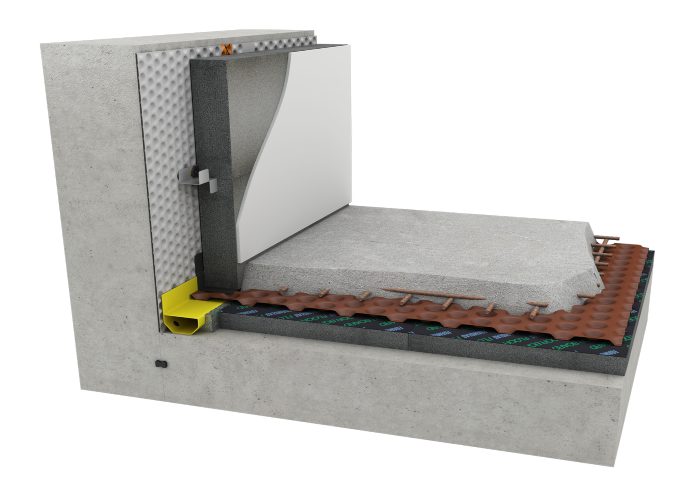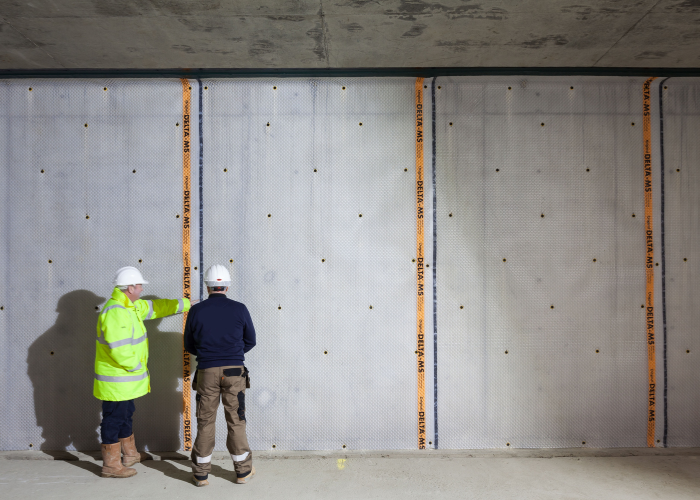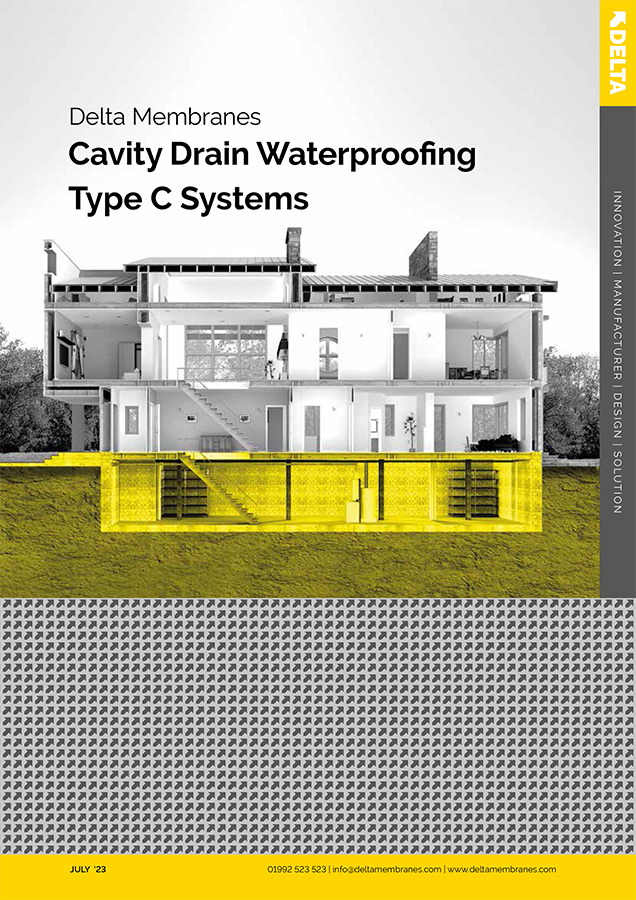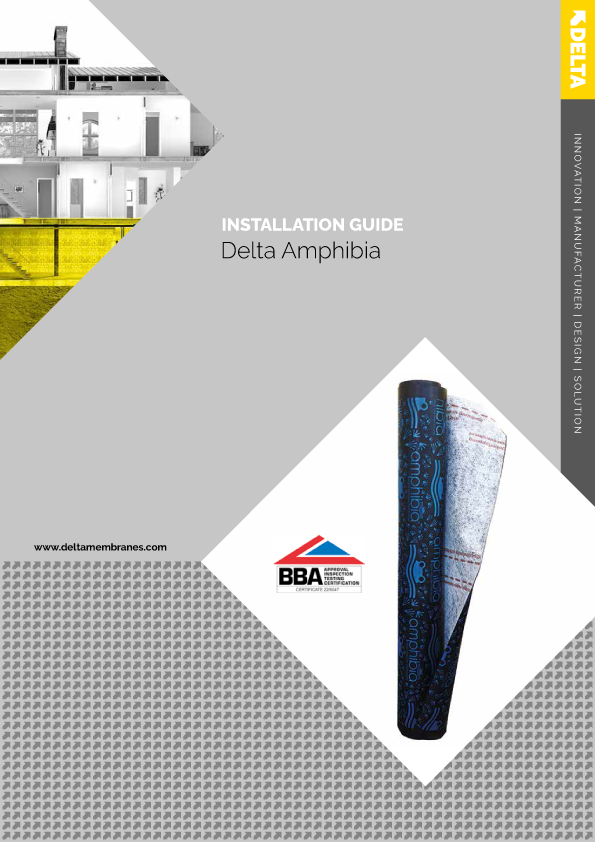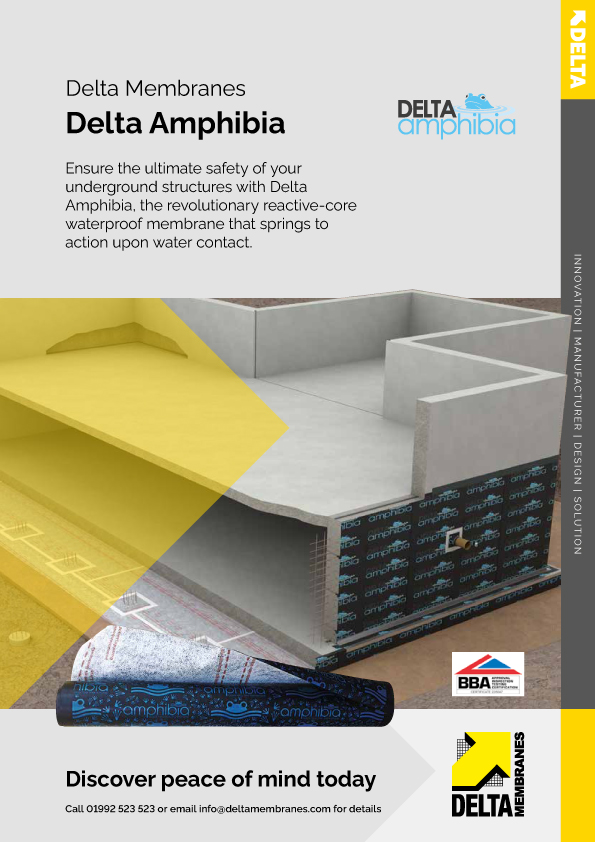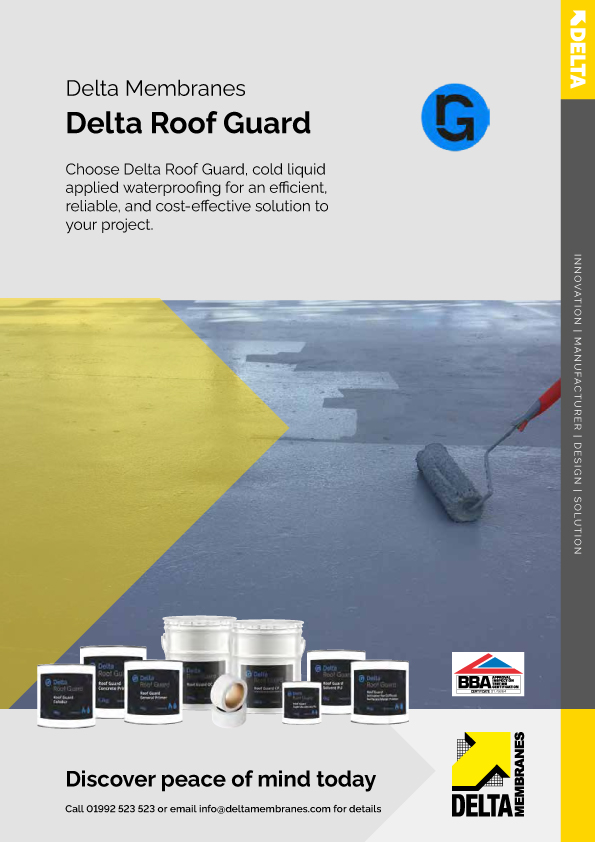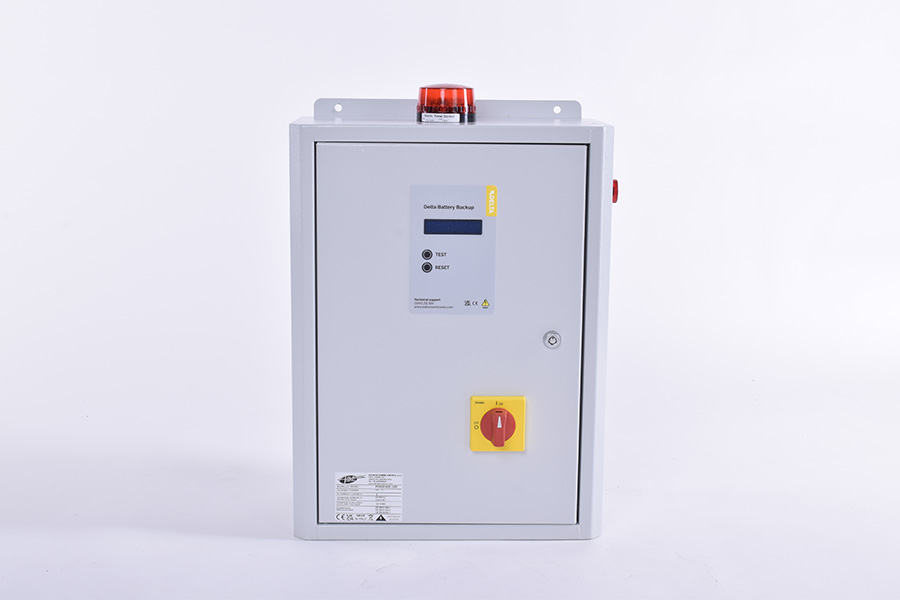The MemTech gas protection range from Delta provides a comprehensive range of gas protection products and ancillaries to protect buildings from ground gases such as Radon, Methane Carbon Dioxide and VOC’s conforming to the requirements of BS 8485:2015, for both above and below ground applications.
Some below ground construction projects require protection from both water ingress and gas contamination. With innovations of new products, such as the MemTech range, it’s now possible to produce a waterproofing design which incorporates both a waterproof and gas proof protection system. Both BS8102:2009 and BS8485:20015 are intertwined. Basements and below ground structures which need to be watertight and gas proof are not anymore complex to design but require further considerations at the design phase and thr oughout the project. The object of structural waterproofing is to protect a structure for its lifetime from water ingress. The object of ground gas protection is to prevent a build-up of gasses against a structure.
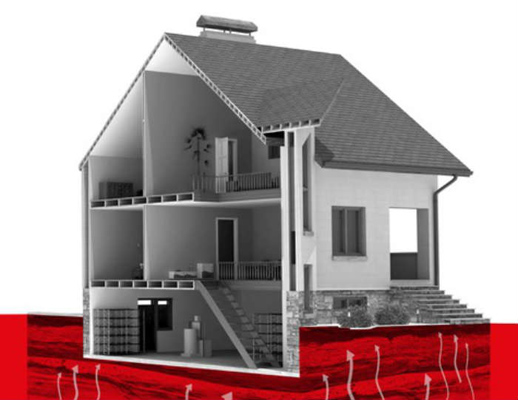
DOWNLOAD
You’ll find all the facts, technical information and inspiration you need in one place in our Basement Pump & Drainage Brochure.Follow the link h ttps://www.deltamembranes.com/wp-content/uploads/MemTech-... to download.
COMBINING WATERPROOFING DESIGN WITH GROUND GAS PROTECTION
Innovations within the waterproofing sector have seen the introduction of Ground Gas Protection Systems, which can offer both gas protection and waterproof solution. A Waterproofing Design Specialist will be able to interpret the requirements of BS8102:2009 and BS8485:2015 to produce a waterproofing design which incorporates both a waterproof and gas proof protection system.
GROUND GASES EXPLAINED
Hydrocarbons
Hydrocarbons derive from the petrol chemistry industry and are highly toxic. Most Hydrocarbons have the potential to cause cancer.
Methane
An odourless flammable gas that is explosive when released into the atmosphere at levels as low as 5% and exposed to a source of ignition. Methane is formed where there is below ground degradation of organic substances e.g. landfill sites, sewage treatment areas, mining operations and peat bogs. Methane can migrate through subsoil and through cracks and fissures into buildings and structures. A build-up of methane to hazardous levels will cause harm to health and compromise safety.
Carbon Dioxide
Carbon Dioxide is an odourless and colourless toxic gas. In high concentrations can result in asphyxiation. The gas is formed by the oxidation of carbon compounds such as that which occurs in landfill sites. When Carbon Dioxide levels reach a concentration of 3%, symptoms of headaches and shortness of breath will occur, becoming severe at 5% between 7-10% will cause suffocation.

Radon
Radon occurs naturally in the environment, this radioactive gas is, colourless, odourless and tasteless. Radon can migrate into any building that is built over a source. If it accumulates in a building, it increases the risk of lung cancer for occupants. Radon is the cause of 15% of lung cancers worldwide (World Health Organisation ‘WHO’ 2009).
Volatile Organic Compounds (VOCs)
Volatile Organic Compounds (VOCs) are organic compounds that easily volatise under normal atmospheric conditions/environments to become vapours or gases. Along with carbon, they contain elements such as hydrogen, oxygen, fluorine, chlorine, bromine, sulphur or nitrogen. Typical VOCs encountered on brownfield and industrial sites include: Petroleum, benzene, toluene, butylbenzenes, chlorinated ethenes, Nitrogen, sulphur and tetrahydrofuran. VOCs in the air react with oxides of nitrogen in the presence of sunlight to form ozone.
CHARACTERISTIC SITUATION SCORE AND HAZARD ASSESSMENT
If a site has been identified with a gas or hydrocarbon contamination it will have been given a Characteristic Situation Score. The Characteristic Situation Score is defined acc ording to how severe the gas fl ow from the ground is. All sites which have been characterised with a gas situation score will require a gas protection system and where identified a waterproof protection barrier.
WHAT ARE THE METHODS OF STRUCTURAL WATERPROOFING?
There are 3 Types of waterproofing methods. These are defined as:
- Type A Tanked or Barrier Protection. Cementitious or bitumen-based products applied internally, externally or sandwiched within the structure.
- Type B Structurally Integral Protection. Reinforced or prestressed concrete designed through composite and integrated details such as water bars to be water resistant.
- Type C Drained Protection. Cavity Drainage Systems which allow for water ingress but in a controlled fashion. Evaluation of groundwater conditions, risk assessment and options for drainage outside the structure should always be considered.
DELTA’S TECHNICAL TEAM
Delta Membrane Systems Limited offer CSSW training and examinations at their fully functional training facilities in Epping Essex, hosted by the PCA. All of Delta’s Technical Team are CSSW qualified surveyors and registered to the “Waterproofing Design Register”. Our Technical Team would be delighted to help with your waterproofing designs/ground gas protection projects.










